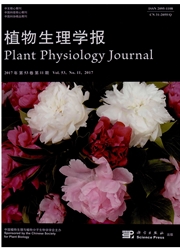

 中文摘要:
中文摘要:
东北农业大学培育的自主知识产权的冬小麦新品种‘东农冬麦1号’(‘dn1’)是强抗寒(可耐–30℃低温)栽培品种。本研究应用BLAST、UNAFOLD等生物信息学软件从冬小麦EST库中分析和预测抗寒相关miRNA及其靶基因,并利用qRT-PCR技术验证表达丰度高、差异显著的miRNA及其靶基因的表达特性。结果显示:生物信息学软件分析和预测到16条抗寒相关miRNAs,隶属于15个家族、对应137个靶基因;其中miR1118、miR1120、miR1128、miR1133和miR1139表达丰度高、差异显著,上述5个miRNA在–10℃时表达量显著下降、在–25℃时表达量显著升高,但是其相应靶基因在–10℃时表达量显著升高,在–25℃时显著下降。可见,上述5个miRNA及其靶基因响应低温胁迫,与‘dn1’的强抗寒性相关。本研究为冬小麦响应低温胁迫下miRNA调控的分子机制奠定基础。
 英文摘要:
英文摘要:
The winter wheat variety 'Dongnongdongmai 1' ('dnl'), cultivated by Northeast Agricultural Uni- versity with independent intellectual property rights, was strong cold tolerance (resistance -30 ℃ low tempera- ture) cultivars. This study analysed and forecasted miRNA and its target genes related to cold resistance from 'dnl' EST by BLAST, UNAFOLD bioinformatics software. Quantitative RT-PCR were applicated to vertify ex- pression characteristic of miRNAs and their target genes which had high expression abundance and apparent differentiation. The result showed that 16 miRNAs, belonging to 15 families and corresponding 137 target genes, could respond to cold stress. Among them miR1118, miR1120, miR1128, miR1133 and miR1139 had higher expression abundance and more apparent differentiation, whose expression levels were significantly de- creased at -10 ℃ and significantly rose at -25 ℃. The expression level of their corresponding target genes were significantly increased at -10 ℃, while decreased significantly at -25 ℃. It was suggested that the selected five miRNA and their target genes could respond to low temperature stress, which associated with the strong cold tolerance of 'dnl '. This study laid the foundation for molecular mechanism of microRNAs regulation in winter wheat under low temperature stress response.
 同期刊论文项目
同期刊论文项目
 同项目期刊论文
同项目期刊论文
 期刊信息
期刊信息
